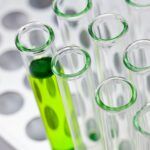Expected Outcome
In its strategic vision for a climate-neutral EU (to meet the carbon neutrality in 2050) presented by the European Commission on 28th November 2018, the share of hydrogen in Europe’s energy mix is projected to grow from the current less than 2% to 13-14% by 2050. In order for hydrogen to claim such position in the energy mix and as explicitly mentioned in the EU Hydrogen Strategy, it is essential that hydrogen becomes an intrinsic part of an integrated energy system. Hydrogen will have to be used for daily or seasonal storage providing buffering functions thereby enhancing security of supply in the medium term. The strategy also calls for an EU-wide logistical infrastructure that needs to be developed in order to transport hydrogen from areas with large renewable potential to demand centres across Europe. Consequently, a pan-European grid will have to be established.
To do so there is significant energy system benefit in using existing natural gas assets across Europe, as they have large seasonal storage potential and can also readily manage large swings in daily demand. To supply this hydrogen, European gas grid operators aim to increase the content of hydrogen blends into natural gas from in existing gas grids (including transmission and distribution gas networks but also by extension their connections to hydrogen production facilities and new end users). In parallel, European gas grid operators also work on repurposing existing assets to transport 100% hydrogen.
Considering these challenges, project results are expected to contribute to all of the following expected outcomes:
- De-risking of business case for repurposing of existing European gas grids for hydrogen and enabling expansion of new dedicated infrastructures for pure hydrogen;
- Increased operator, regulator, authorities, and end user confidence in safety of repurposed gas grids by consolidated and exhaustive scientific data;
- Making available harmonised guidelines to assess the hydrogen effect on metallic materials present in the gas grids to get a complete view of network compatibility. These guidelines would provide inputs to pre-normative actions conducted through European organisations and enable a seamless interconnection between gas grids.
Project results are expected to contribute to all of the following objectives of the Clean Hydrogen JU SRIA:
- Development of technologies and materials to facilitate the transportation of hydrogen via the natural gas grid.
- Enable through research and demonstration activities the transportation of hydrogen through the natural gas grid either by blending or via repurposing to 100% hydrogen.
Scope
Former public bibliographic results and testing programs (e.g. NaturalHY, HYready, MultiHy or Higgs projects) have identified an embrittlement effect on steel grid materials used for pipes or network equipment, directly linked to the partial pressure of hydrogen (commonly expressed in terms of percentage of hydrogen in the total volume of gas at a specific pressure). However, this embrittlement effect on the various metallic materials used on the gas distribution networks (steel, but also cast iron, copper, lead…) has not been documented to date, as most existing testing programs have investigated non-metallic materials only. Therefore, there is a strong need to document the effect of hydrogen on metallic materials at low pressure, taking into account the great diversity of existing networks across the European Union, in terms of material grades used, building protocols (e.g. welds) or day-to-day current and future operational parameters (e.g. pressure level).
All types of metallic materials (steel, cast iron, copper, brass, lead, aluminium) or operational parameters representative of the functioning of the distribution networks have not been fully studied. All gas grids characteristics and load case scenarios should be covered to better assess the lifespan of existing infrastructure.
Currently different standards can be used for the design of metallic components (ISO 11114-4, ASME B31.12) or to assess their mechanical properties in the presence of hydrogen (ANSI/CSA CHMC 1, ASTM G142). This wide range of standards and the lack of commonly agreed mechanical guidelines are slowing down the definition of harmonised criteria to assess hydrogen-readiness of European gas networks.
Proposals should therefore focus on all non-steel metallic materials constitutive of Distribution networks (such as cast iron, copper, brass, lead, aluminium etc.).
In particular proposals should:
- Deliver a preliminary inventory of non-steel metallic materials constitutive of the European distribution natural gas grid and deliver a priority ranking analysis to evaluate the most cost-efficient strategy (adaptation or replacement) for each of them;
- Propose a testing approach covering most relevant non-steel metallic grades (cast iron, copper, brass, lead, aluminium) constitutive of European distribution natural gas grids and their different operating conditions (maximum pressure, pressure cycling, etc.). Proposals should cover an extensive range of natural gas/hydrogen blends with a focus on hydrogen contents up to 20%, and 100%. This approach should combine mechanical tests and modelling, e.g. using first principles calculations or fracture mechanics method of hydrogen interaction with the materials. A preliminary bibliographic review should be conducted to identify the gap analysis at the start of the action, taking into account existing results from former and other ongoing projects;
- Propose harmonised protocols and run material tests to measure the mechanical properties affected by the presence of hydrogen and critical for its integration into networks (should include e.g. crack propagation, fatigue, toughness, and impacts on welds and heat affected zones (HAZ)) and impact of chemical composition for grid components. The protocols should be made available to the public and should ensure that all results are comparable between the different testing laboratories involved. It should also, serve as a standardised reference guideline for future investigations.
Following the testing activities proposals should make available a database of gas grid metallic materials’ behaviour in the presence of hydrogen associated with network operating conditions, assessing the compatibility of vintage and new gas pipes. There should also be a plan that ensures the that the database is updated after the project is finished with future testing results.
Projects should also identify acceptance criteria including the allowed size of defects, depending on the pressure and hydrogen concentration.
Proposals should ensure regular knowledge sharing with other topics devoted to hydrogen injection into gas grids that will require those tests’ results, and especially HORIZON-JTI-CLEANH2-2022-02-02, HORIZON-JTI-CLEANH2-2022-05-03 and HORIZON-JTI-CLEANH2-2022-05-04.
At least two different research institutions should be included in the consortium in order to ensure the comparability of the testing results.
Proposals are expected to contribute towards the activities of Mission Innovation 2.0 – Clean Hydrogen Mission. Cooperation with entities from Clean Hydrogen Mission member countries, which are neither EU Member States nor Horizon Europe Associated countries, is encouraged (see section 2.2.6.8 International Cooperation).







Leave a Reply